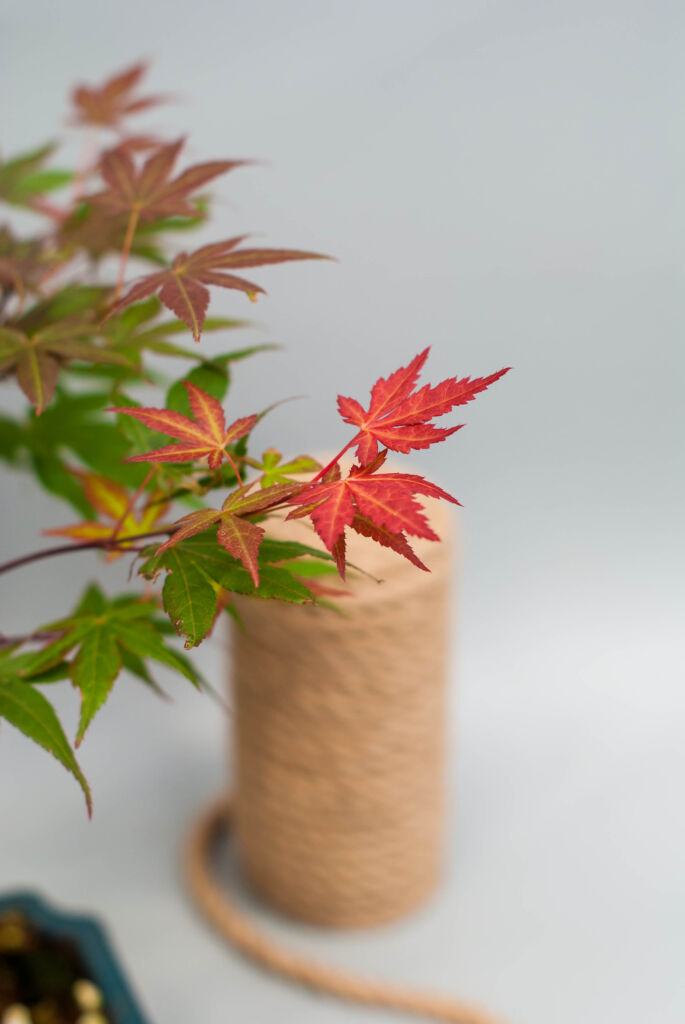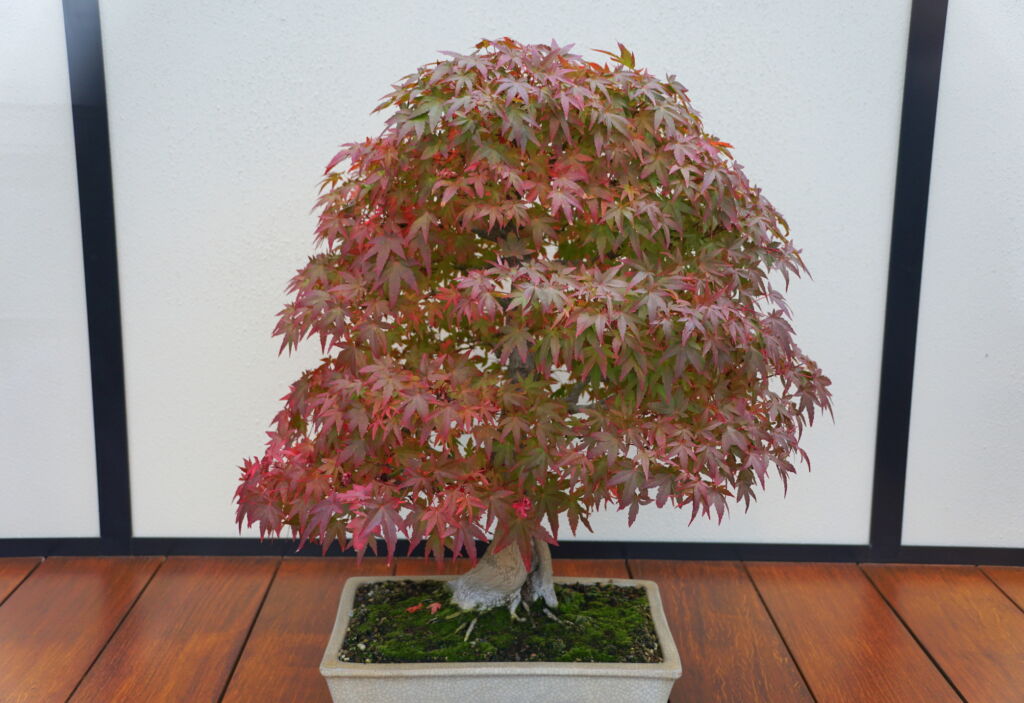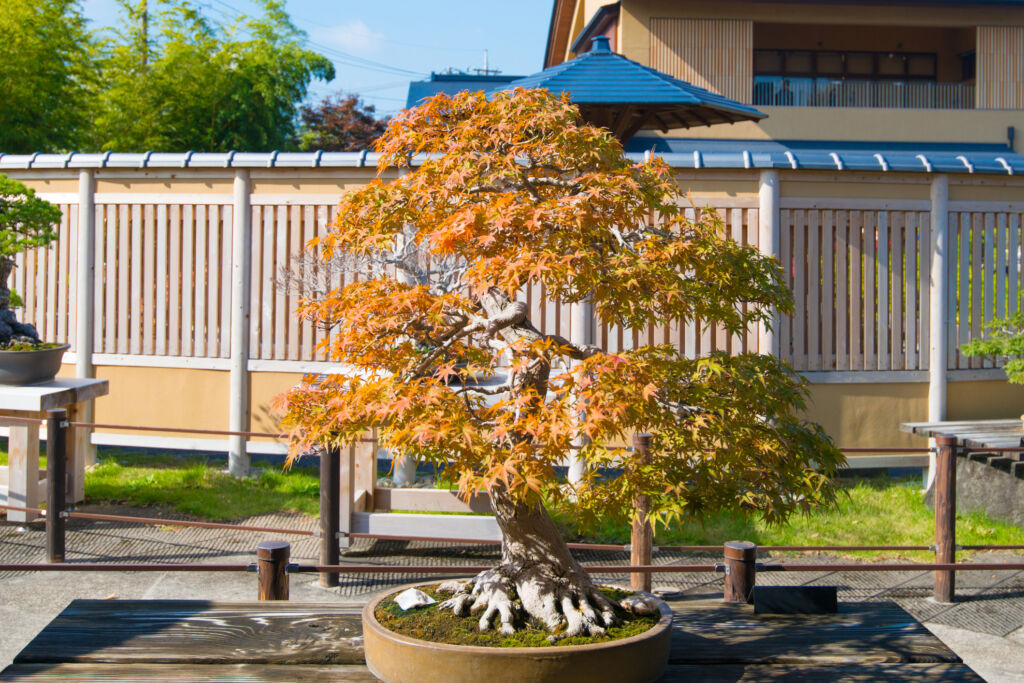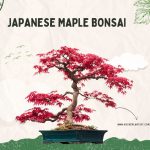HousePlantJoy is supported by our audience. When you purchase through one of our links, we may earn a small affiliate commission. As an Amazon Associate I earn from qualifying purchases. Your cost is not affected.
==================
Growing A Japanese Maple Bonsai
New and seasoned horticulturists and gardeners enjoy taking care of Japanese Maple bonsai. Native to Asian countries like Japan, China, and Korea, this plant is versatile. The deciduous tree comes in various forms and is always unique. It can grow inside and in outdoor settings due to its adaptability. Its decorative look allows for adding beauty and peace to homes. Yet this beloved dwarf tree only thrives and turns gorgeous with proper care. Hence, it’s worth it for its artistic features and something that requires attention. Putting in the effort to keep it alive and making it grow yields positive results.
We will go through some steps to take care of this fascinating tree in this article. Included are plant details and suggestions to make it ornamental and flourish. So read on if this miniature tree appeals to you.
What Is A Japanese Maple Bonsai?
It’s a plant called Acer Palmatum, and gardeners cultivate it as a shrub or tree. It grows well when outside but can handle staying indoors. Its versatility allows it to remain small by wiring and pruning too. Hence, horticulturists love it because it can thrive in many places and is flexible. Through bonsai techniques, it can stay small and look like a miniature tree. Thousands of varieties are available for folks to handle too. Still, it displays different sets of leaves. Some variants have solid colors, while others have variegated designs. Whichever form, this plant has foliage with shifting hues. It’s because it sheds its leaves before it turns dormant. Hence, somehow it explains why they are recognizable across the globe.
Different kinds of Acer plants produce opposite and hand-shaped foliage. The leaves come in reddish and purplish hues and have five to seven lobes. The plant may also have vertical and horizontal branches. The upright ones give a tree appearance and allow forming of canopies. Straight limbs give a tree a broad look. Pendulous ones give a cascading or weeping appearance too. With continuous shaping, it can remain looking like a dwarfed tree. Through a bonsai technique, it can stay one foot to two feet tall. Thus it’s preferred by many to make miniature trees. They can fit well in unique outdoor landscapes and indoor gardens.
A Few Japanese Maple Bonsai Varieties
Although resilient, only some Acer Palmatum plants are ideal as bonsai. After all, they have favorable features in natural design, flexibility, and sustainability. Some varieties are more attractive, shapable, and easy to manage. For instance, the Lion’s Head or Shishigashira may have a slow growth rate. Yet it produces short stems and curvy foliage. For something small that has delicate offshoots, there’s the Kiyohime variant. The Deshojo also has dark red leaves like the Atropurpureum. For green foliage during summertime, the Katsura variant is available too. Rare variants, like the Seigen, are also accessible. Different kinds are similar in the structure of their leaves. Also, in taking care of them, they could do well in moist, acidic, fertilized, and quick-drying soil. So they have unique features and similarities.
Still, folks recognize other types like Emperor One of their compact build. People also identify and prefer the Coral Bark or Sango-Kaku. They are appealing for their neon-like foliage in the spring or summer months. The Crimson Queen is an example of a dome-shaped variant with weeping, red leaves. It stays reddish in the summertime. Still, other varieties are available and manageable. So folks interested in dwarfing trees can choose to grow Japanese maple plants.
Watering Japanese Maple Bonsai
This plant can demand a lot of water. After all, it grows well when in a moist environment. But it shouldn’t stay soaked for too long. After all, it can suffer overwatering too. When it has more than enough water, its lobed foliage may show shades of brown or black. Hence, hydrate it every four to seven days. Also, it needs deep watering due to its extensive root system. But it matters to ensure soil dryness before spraying or pouring water first. Still, hydrate it more during warm months. Limit the plant’s intake late in the year too. When it goes dormant, it doesn’t get thirsty. But it requires watering when it’s hot and windy. So owners of this bonsai ought to be mindful of its water consumption.
Also, before feeding it water, check the soil. Don’t hydrate it when the ground is still moist. Check if the earth can let moisture pass through too. These measures are to prevent waterlogging. After all, such a problem can suffocate the roots and attract pests. Hence, there should be a strategy when watering this plant. By observation, work on keeping it wet. Don’t stick to a fixed watering schedule. Still, try to use water with slight acidity. It prefers to thrive in a “sour” environment. Calcareous water may have alkaline elements that could bring about undesirable effects.
Sunlight, Humidity, and Temperature For The Bonsai
All variants of Japanese Maple bonsai must have adequate daylight exposure to thrive. They enjoy bright and direct or indirect sunlight. When in the shade, some of their leaves can turn green. After all, more chlorophyll formation may occur when there is dimness. Still, artificial light sources should at least be present when the sun’s rays are absent. It’s for an Acer plant to have adequate food via photosynthesis. Yet it could do well with some sunlight due to the warmth it brings too. This plant can handle warm temperatures. But it should be in the shade when it gets above thirty degrees Celcius. Its leaves may also burn from too much heat. So it should stay where there is heat and light to survive.
During wintertime, it should be indoors in cold climates. But it must stay where it’s humid. The freezing weather can kill the plant, but it needs moisture while dormant. When it’s cold indoors, the humidity is low. Hence, it becomes dry and loses moisture. Some growers put pebbles near their Japanese bonsai trees for this reason. Others use heating appliances to control the temperature inside. When this dwarfed maple tree is cozy, it will thrive and live longer. Thus it needs fixed lighting and room temperature to some degree. Yet this bonsai will develop once after setting everything.
Pruning, Wiring, and Soil Condition
It requires skillful hands to create and maintain a Japanese Maple bonsai. Making any plant a bonsai requires occasional trimming. Cutting a plant’s limbs causes it to stay short and have developed stems. After all, it focuses on improving its lower parts when pruned. Besides, a plant resembles a small tree when it has a thick stem and foliage canopies above. It does well with cutting and pinching to get in shape. Also, wiring gives the same benefits. Putting cords on the offshoots of a Japanese Maple plant controls its growth. It allows for having upright or weeping limbs. Yet folks are extra careful when putting wires on this plant. It has sensitive parts that may sustain damage and rot due to faulty and prolonged wiring. It’s why some gardeners put some paper between the branches and cords when shaping a bonsai. Thus it takes creativity and skill to care for this plant.
Like other plants, this dwarfed tree has specific requirements too. It thrives in acidic environments. Hence, it does well when there’s constant moisture. Also, it could do well with a nitrogen-rich fertilizer. Its demand for this macronutrient is due to its leaf and limb growth. Yet it may be best to provide it with organic compost. It’s often slow-release and ideal for a slow-growing plant. Give it plant food weekly from March to September. But lessen their consumption during wintertime to once a month. Remember that they don’t use as much energy when in dormancy. Their roots could also burn when there’s too much fertilizer. So it’s crucial to be cautious when feeding this miniature tree plant food too.
Last But Not The Least
The Japanese Maple bonsai is unique and gorgeous, perfect for any garden or household. It has delicate yet decorative foliage and offshoots that appeal to artists. Hence, it’s clear why many appreciate and recommend it. The plant has pros and cons that explain why it may be ideal or intimidating to gardeners of all levels. Sooner or later, it will turn into a beautiful plant with proper care measures. Hence, it’s crucial to know more about it and be ready before committing to handle one. Yet devoting one’s time and effort to raising and shaping a plant into bonsai is often rewarding.
We hope our write-up did well detailing the look and other aspects of the Japanese Maple bonsai. More resources are available to give in-depth information about the plant. But our tips may already allow you to begin taking care of one. Thanks for reading, and may we see you in our next post. Good luck with your bonsai!










